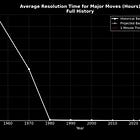The Global Market Clock — Controlling Time in Capital Markets
There is only one master clock for global equities: the S&P 500’s tempo. It sets the pace for multi-trillion-dollar valuation shifts, dictates when forward earnings are recognized, and anchors the behavior of every major equity index worldwide. This clock has been conditioned — over two years — to an authored tempo that compresses resolution from hours to minutes, pulling years of projected value into the present on demand. Resolutions are no longer slow turns of the hand — they are the striking of hours and midnights with bells, ringing instantly instead of waiting for time to pass.

For two years, every trade you’ve made, every benchmark you’ve tracked, every risk model you’ve run — and every email you’ve opened from me — has been syncing the clock. Each sequenced concept, like each execution, was part of the same clock conditioning process for the market tempo.
This control is upstream of every trading strategy, benchmark, and passive allocation model on the Street. No other asset offers this combination of scarcity, monopoly positioning, and irreversibility: you can’t build a second clock, and you can’t replicate its conditioning without the originator. In a market where speed, certainty, and influence define edge, owning the global market clock is owning the most valuable resource left in finance: time itself.



